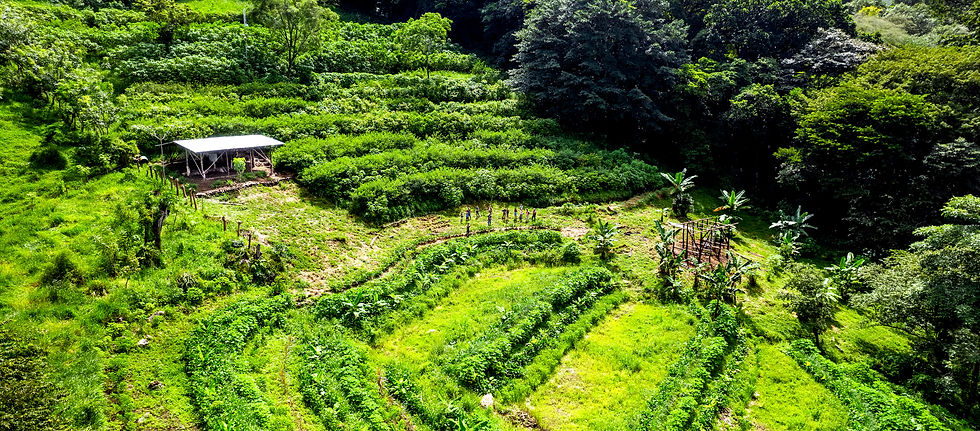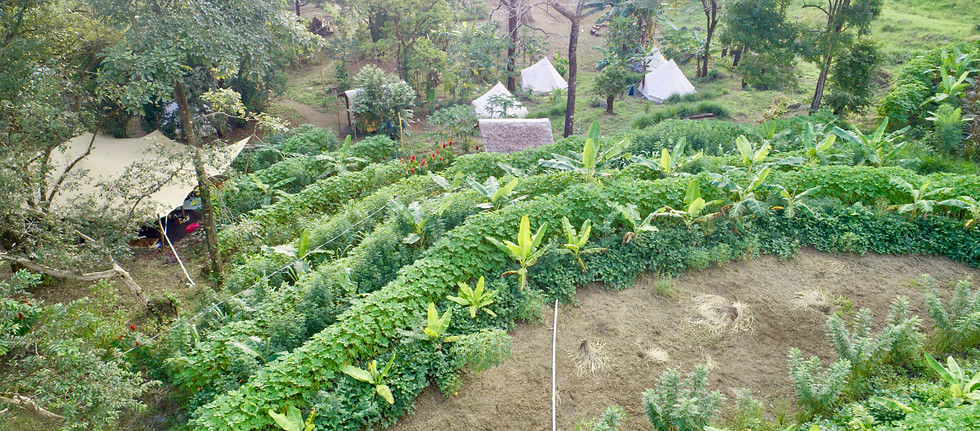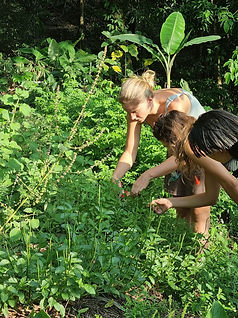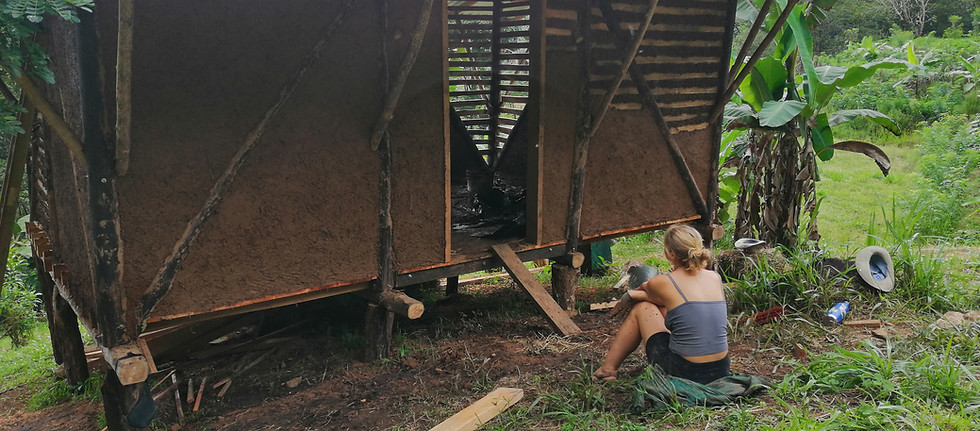The Farm
Come visit us In the Machuca Valley of central Costa Rica! We are creating an epic demonstration site based on principles of regenerative agriculture. It's a living showcase of various food-production systems that could be integrated into any project. Explore and learn about the process of land regeneration while witnessing a vast array of plants flourishing in our living nursery. Immerse yourself in this inspiring environment, where knowledge and nature come together.





Earthworks and Water Retention
Much of La Huerta is situated on a large slope. When we started here in 2022 much of the land was deforested cattle pasture. It rains a lot during times of the year and without the forest to help soak up the water we end up with a lot of erosion. That results in a loss of topsoil, erosion gullies, and an excess of organic matter in the Machuca river.
The first big undertaking by Rob when he first arrived. Swales, step ponds, catchment ponds, and terraces we're dug. This allowed us to capture the water into our aquifer, retain top soil, and mitigate erosion and run off. It also created flat spaces to walk and plant trees.





Agroforestry Systems
Once the earthworks had been completed they were first planted with support species. We plant these in patterns and lines in order to work with contours of the land and make maintenance straight forward and teachable. Support species are an essential part of regenerative agroforestry and serve several functions.
-
Preventing Erosion. After doing all that hard work to move rocks and reshape the soil, it's important to not have it be undone when the rains arrive. In the tropics vetiver is a favorite. Its deep fibrous root systems act as a net that holds the soil in place. It's very hardy and can be planted in dense hedges. In addition to the roots helping prevent erosion, minimizing direct exposure to the soil to rain is important to mitigate erosion.
-
Building Biomass. In essence this is "Food for our food." In a natural forest environment, fallen leaves and trees continually add biomass to the soil and continue the cycle of life. After deforestation, these inputs stop and existing top soil is stripped away due to rain further degrading the land. Support species are used as "chop and drop" to add organic material back to the soil. This in turn brings bacterias, fungi, and nutrients that help our trees. We have a lot of diversity in our biomass accumulators; bananas, cacti, sugar cane and other grasses, yucca, native hardwoods like Madero Negro, and Boton de Oro (to name a few!).
-
Shade for our young trees. When it comes time to plant our young fruit trees, support species protect them from harsh exposure to the sun. As the trees grow, the support species are eventually phased out. This process is called succession and mimics the naturally occurring process of forests.



Fruit Trees
Once the foundation of Earthworks and support species was established, it was time to plant our long term crops. We have now planted over six hundred fruit trees on the property with a focus on diversity and quality genetics. We have over seventy species of fruit growing at La Huerta, and after several years in the ground many are starting to bare their first fruit. Our biggest plantings were of mango, avocado, dragon fruit, citrus, cacao, coconuts, and anonas like biriba, guanabana and custard apples. We also have a wonderful collection of exotics such as mangosteen, durian, jackfruit, sapote and so much more (over 70 species in total). Our focus was on bringing well loved varieties as well as identifying local genetics that have thrived in our neighbors' farms.
Our mission is not only to create abundance for everyone who visits La Huerta, but to also create a genetic library of tropical fruits that can be reproduced and shared with our friends and neighbors.






Herbs and Gardens
La Huerta is also home to a growing number of gardens. We're growing greens, tropical tubers like malanga and yucca, veggies, and a vast collection of medicinal herbs. As much as we love growing plants, we love to use them. You'll often find us busy making ferments, natural dyes, teas, and more.
Natural Building
We've also been busy adding infrastructure to La Huerta. Led by Rob, each structure has utilized natural building methods. Most of the wood which came from the land or was repurposed hardwood fence posts found discarded on the roadside. The walls are made with cob (a mix of clay, straw and sand) that helps regulate humidity. Celia has been refining her techniques in natural plasters resulting in a beautiful finish to our spaces. So far we've built several cabins, a composting toilet, and a classroom. We plan to continue developing the space over the coming years with more housing, a greenhouse, workshop, more play spaces, and a biopool.



